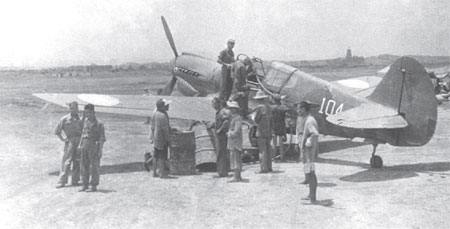WWII Flying Tigers want to see history respected
By China Daily (China Daily USA) Updated: 2014-02-07 13:23
|
A P-40 Kittyhawk flown by the American Volunteer Group, or Flying Tigers, receives service during World War II. Provided to China Daily |
Calloway said that her grandmother, whom she was named after, used to tell stories about having a husband and four sons serve in the war, never knowing if they were going to make it.
But she said it was not until she visited China in 2002 that she started to realize the cruelty of war.
"Most people don't remember that between 1931 when the Japanese first invaded China and 1945, they killed between 25 and 30 million Chinese people. It broke my heart," said Calloway, who says her museum will renovate to show more about how China suffered during the war, in addition to telling the legends of the Flying Tigers.
During the WWII, Calloway's grandfather, General Chennault, used to fly P-40 aircraft. One of the models, a restored P-40 Curtiss Warhawk, is scheduled to be displayed at the National World War II Museum in New Orleans next year.
"We all fought as one to defeat the Japanese. Because the relationship in our world today between China and the United States, I think it's extremely important that we use that to remember that time and work for a better future," said Calloway. "And of course the P-40 Warhawk is such a good reminder of that time."
Ken Mattews, another Flying Tiger veteran, said he was fortunate enough to be the only one from his family who fought in WWII.
"I survived. Thank Lord for that," said Mattews, now 89.
Recalling what he saw on the battlefield as well as the civilian areas, Mattews expressed his disgust with war.
"What they (the Japanese military) did on American soil, Burma soil and Chinese soil would just turn your stomach," he said. "I still haven't got over the hatred I have for the Japanese. But maybe 'hatred' is too strong, 'dislike' would be a more proper word."
Zhang Yang contributed to this story and can be contacted at yangzhang@chinadailyusa.com





